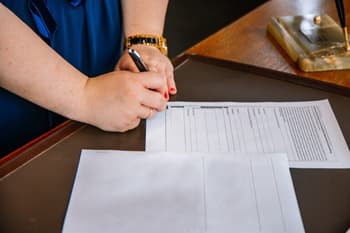In Short
-
Trade mark infringement occurs when a similar mark is used without permission, leading to consumer confusion and damage to the original brand.
-
Conducting a comprehensive trade mark search, including online and industry-specific checks, is essential to avoid infringement.
-
Proactively protect your trade marks by registering them, using them consistently, and monitoring for potential infringements.
Tips for Businesses
To protect your brand, ensure your trade mark is distinctive and conduct thorough searches before adopting a new mark. If you discover infringement, act quickly to safeguard your rights. Consider registering your trade mark for stronger protection and always monitor the market for potential violations.
Your trade mark is a valuable asset distinguishing your goods and services from your competitors. Trade mark infringement can be a costly and damaging issue for a business of any size. Whether you are launching a new product or expanding your brand, it is crucial to understand how to prevent trade mark infringement. This is to avoid infringing on third-party rights and to protect your intellectual property. This article explores four essential questions you should ask to help prevent trade mark infringement.

This guide explains the essentials of trade marks and the steps required to register a trade mark.
1. What is Trade Mark Infringement?
Trade mark infringement occurs when a party uses, without permission, a trade mark that is identical or deceptively similar to a registered trade mark for the same or similar goods or services. This can:
- damage the reputation of the business that owns the registered trade mark;
- dilute its branding; and
- lead to consumer confusion.
When comparing trade marks, consider:
- similarity: infringement can occur even if trade marks are not identical, but are deceptively similar;
- goods and services: the infringing use must relate to the same or similar goods or services covered by the registered trade mark; and
- the likelihood of confusion: assess whether consumers are likely to be confused about the origin of the goods or services.
2. How Can I Conduct an Effective Trade Mark Search?
Before adopting or using a new trademark, conducting a comprehensive search is crucial. This is to ensure you are not infringing on any existing rights. Your search should include:
- a search for registered trade marks and pending applications on IP Australia’s database;
- an online search using search engines such as Google to identify any similar marks in use, even if they have not been registered; and
- industry-specific research in which you examine your particular industry or market for potential conflicts.
3. What Steps Can I Take to Avoid Infringing on Third-Party Trade Marks?
Trade mark infringement can occur even with the best intentions. To help avoid unintentional infringement of third-party trade marks, consider the following steps:
- Develop a distinctive brand identity: Create original trade marks that stand out from competitors in your industry.
- Conduct thorough clearance searches: Perform comprehensive searches of existing trade marks before adopting new marks.
- Seek professional guidance: Consult a trade mark lawyer when uncertain about potential infringement issues.
- Document your brand development: Maintain detailed records of your brand development to demonstrate originality and the origin of your trade mark if required.
- Register your trade mark: Registration of your mark can act as a defence to infringement.
By implementing these measures, you can significantly reduce the risk of unintentionally infringing on third-party trade mark rights and strengthen your own brand protection.
4. How Can I Protect My Trade Marks from Infringement by Third Parties?
While preventing infringement of third-party trade marks is crucial, it is equally important to protect your intellectual property. Safeguarding your trade marks requires a proactive approach and ongoing vigilance. Consider implementing the following five strategies:
- Register your trade marks: While unregistered marks have some protection, registered trade marks give you the exclusive rights to use the mark in relation to your specified goods and services, making it easier to take legal action against infringers. Importantly, you will need a registered trade mark to bring an infringement claim against a third party.
- Use your trade marks consistently: Regular and proper use of your trade marks protects your rights.
- Monitor the market: Conduct regular searches of the marketplace to identify potential infringements of your trade mark rights.
- Act promptly: If you discover any potential infringement, take swift action to protect your rights. A delay in addressing infringement can weaken your legal position. This may lead to consumer confusion and the dilution of your brand over time.
- Educate your team: Ensure everyone in your organisation understands the importance of trade mark protection and proper usage.
Key Takeaways
Preventing trade mark infringement is crucial for protecting your brand and avoiding legal disputes. You can significantly reduce the risk of trade mark-related issues byL
- understanding what constitutes infringement;
- conducting thorough searches;
- taking steps to avoid infringing on others’ rights; and
- actively protecting your trade marks.
If you need assistance with trade mark searches, registration, or infringement issues, our experienced IP lawyers can assist as part of our LegalVision membership. You will have unlimited access to lawyers to answer your questions and draft and review your documents for a low monthly fee. Call us today on 1300 544 755 or visit our membership page.
Frequently Asked Questions
Do I need to register my trade mark?
While unregistered trade marks have some protection under the common law, registered trade marks provide stronger and more easily enforceable rights. Registration gives you the exclusive right to use the mark and makes it easier to take legal action against infringers.
What should I do if I discover my business has unintentionally infringed on someone else’s trade mark?
If you discover potential unintentional infringement, consult a trade mark lawyer immediately. They can assess the situation and advise on the best course of action.
We appreciate your feedback – your submission has been successfully received.











